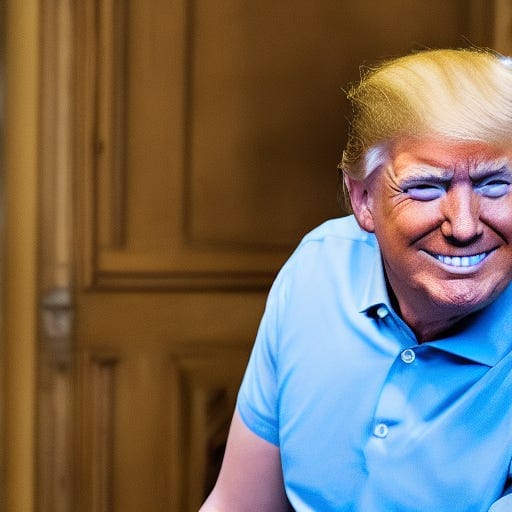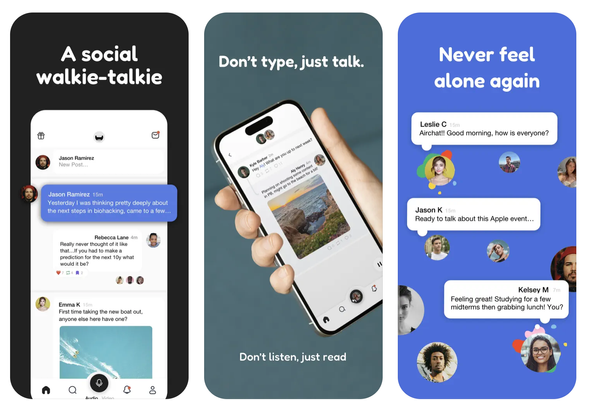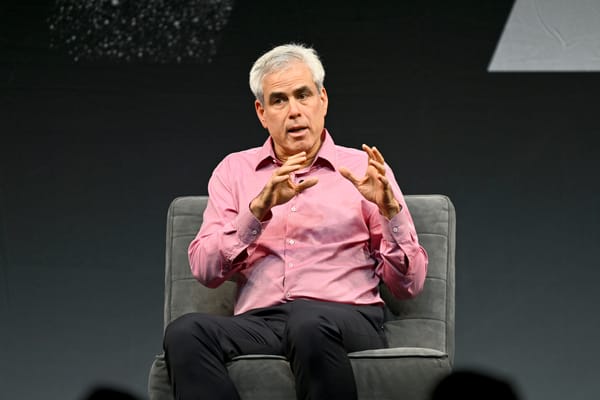Trump is restored to Twitter
PLUS: Layoffs continue, chaos on the sales team, and what happens when the certs expire?

After another manic weekend at Twitter, questions continue to mount about Elon Musk’s business strategy, his approach to content moderation, and whether his remaining team can keep the servers up and running during a period of increased demand.
Let’s talk about what we’ve learned over the past few days.
I. Trump is back (sort of)
In the end it came down to, of all things, a Twitter poll. After 15 million votes on a poll that Elon Musk posted Friday afternoon, and 51.8 percent voting in favor, the Twitter account of Donald Trump was restored into existence.
“The people have spoken,” Musk tweeted the following day. “Trump will be reinstated. Vox Populi, Vox Dei.” The voice of the people is the voice of god.
There was reason to doubt the significance of the people’s voice in helping Musk make his decision. For starters, he had pre-announced the outcome in May. As the New York Times had reported him saying at the time, the ban was “a mistake because it alienated a large part of the country and did not ultimately result in Donald Trump not having a voice.” Moreover, Musk said, it was “morally wrong and flat-out stupid,” and “permanent bans just fundamentally undermine trust in Twitter.”
Writing about this issue on January 6, 2021, I (Casey) had taken the opposite view. Banning Trump was necessary and urgent, I wrote, because he was using social networks to aid in his effort to overthrow the government and the rule of law. Social networks were unlikely to survive intact in a world in which America’s democracy was replaced by authoritarianism; if only for self-preservation, then, platforms were smart to remove his account. Millions of other people had lost their accounts for far smaller infractions; surely mounting a coup justified extraordinary intervention.
These concerns can feel somewhat distant now that Trump has been weakened by the failure of so many candidates he endorsed to win office in the midterms, as well as the spiraling legal challenges he faces related to the events of Jan. 6 and countless other issues. Trump’s frequent, misinformation-laden outbursts on Truth Social have failed to drive the news cycle the way his old tweets did, and for the moment his power appears to be on the decline.
And yet: he is still arguably the most powerful and popular figure in the Republican party, and he is once again running for president. It seems quite possible that, should he return to Twitter, he would use and misuse the platform just as he did before.
But as it turns out, just because Trump’s account was restored doesn’t mean you’ll be able to find him there. In a speech on Saturday, he said “I don’t see any reason” to go back to Twitter. “Truth Social has been very, very powerful, very, very strong, and I’ll be staying there,” he said. (He is legally obligated to make his posts exclusive to Truth Social for at least six hours under his deal with that service, for whatever that’s worth.)
Musk is fond of saying that the most entertaining outcome is the most likely. Restoring Trump to Twitter, only for the ex-president to never use it, feels like an outcome fitting that description. And it’s plausible, too: as the Times’ Joe Bernstein put it, “He was the big dog on here for so long and now he’s being asked to come back and play a supporting role in Elon’s drama.”
Trump doesn’t do supporting roles, and if Musk’s desperate tweets are any indication, Musk needs Trump much more than Trump needs Twitter.
Whatever Trump does, though, the process through which Musk decided to restore his account deserves scrutiny.
In October, Musk said that he would outsource major decisions around content moderation to a special council. “No major content decisions or account reinstatements will happen before the council convenes,” he tweeted.
The council was never formed, and Trump’s account was restored based on the results of a poll. (Musk’s sudden lack of concern around how that poll might have been susceptible to influence by bots, an issue on which he has been outspoken and litigious, is notable.)
Meanwhile, he began restoring the accounts of lesser offenders — the comedian Kathy Griffin, who had impersonated him; the Babylon Bee and Jordan Peterson, who had posted transphobic comments; and Kanye West, who has recently been in the throes of an anti-Semitic meltdown.
Musk has drawn at least one hard line, though. Responding to one of his @ mentions, he said he would never allow Alex Jones back on Twitter.
“My firstborn child died in my arms,” Musk tweeted. “I felt his last heartbeat. I have no mercy for anyone who would use the deaths of children for gain, politics or fame.”
It’s a poignant story, and also the right call: Jones has long since forsaken his right to the reach that Twitter affords.
And yet, at the risk of stating the obvious, this sort of ad hoc approach to content moderation and community standards is completely unsustainable. It does not scale beyond a handful of the most prominent accounts on the service. And, most worryingly, it is not based on any clear principles: Musk is leading trust and safety at Twitter the same way he is leading product and hiring — by whim.
On one hand, this sort of bespoke, CEO-led content moderation isn’t totally novel: Mark Zuckerberg has done more than his share of intervention in difficult questions of moderation over the years. On the other, social networks have learned to gradually devolve power away from executives toward other sources: community standards, policy teams, and an Oversight Board, to name three.
Given Musk’s initial enthusiasm for deferring decisions to a council, there was hope that he would take a similar view. But in the end, in moderation as in so many other aspects of his takeover, there were only his impulses.
II. Late-night code reviews
On Thursday, a week after Musk abruptly ended Twitter’s remote work policy and ordered everyone back to the office (or else), employees received another alarming email: effective immediately, Twitter’s offices were temporarily closed, and badge access was suspended.
The news came a day after Musk asked employees to sign a loyalty pledge: opt-in to Twitter 2.0 – an “extremely hardcore,” engineering-driven company – or resign. Hundreds of employees chose the latter.
We’re told that part of this was Musk’s plan all along. He’d wanted to lay off significantly more than 50 percent of the company earlier this month, but was talked into starting with roughly 3,700 roles, sources familiar with the matter told Platformer. The “hardcore” email was a way to thin the ranks even further.
But the resignations went deeper than Musk and his team had anticipated. By Thursday, the company was left with critical gaps in its engineering org. The core services group, which includes teams responsible for user services (Gizmoduck) and serving tweets (Tweetypie) went down to just one person, we’re told.
Part of the issue can be seen as a failure on Musk’s part to read the room. Many Twitter employees joined the company because they believed in its mission. Twitter has never been known for offering higher salaries or better stock-based compensation than its competitors. Instead, it offered a chance to build a vital service for the exchange of news and information, elevating voices that previously had struggled to affect the public conversation.
Under Musk, the company is changing profoundly, but employees aren’t sure what it is changing to. Aside from vague tweets about free speech, the new chief executive hasn’t laid out a comprehensive vision for Twitter as a place to work, much less as a social network. In fact, he’d said very little, aside from telling employees they should expect to work longer hours.
After the resignations started to roll in, though, Musk and his team went into damage control mode, walking back their earlier statements about remote work — and offering some people as much as a $100,000 raise to stay, sources said.
On Friday morning, things got even stranger. At around 9AM PT, Twitter engineers received another missive from Musk: “anyone who actually writes software, please report to the 10th floor at 2pm today,” he said. He asked remote employees to fly to San Francisco to present. “These will be short, technical interviews that allow me to better understand the Twitter tech stack.”
Employees were dumbfounded. Hadn’t Twitter just closed the offices? Nevertheless, roughly 250 people signed up to meet with Elon Musk and show him how Twitter’s technology works. “Please be prepared to do brief code reviews as I’m walking around the office,” Musk said in a follow-up note.
We’re told the code reviews were shorter and less technical than employees expected. At around 1:30AM PT on Saturday, Musk tweeted that he was “just leaving” Twitter HQ, along with an image of a whiteboard that maps out how Twitter works. In a subreddit called “programmer humor,” the image received 35,000 upvotes, under the title “Twitter for dummies.”
One of the photos that Musk tweeted from the office appeared to be taken by a SpaceX engineer. In fact, Twitter still has roughly 100 engineers on loan from Musk’s other companies, we’re told.
As of Monday morning, Twitter had just over 2,700 full-time employees.
III. The shrinking sales team
The loyalty-oath purge was followed by a second, more targeted set of cuts.
On Sunday, we’re told that Musk held two meetings with the global sales team to discuss the company’s ad products, his past votes for Joe Biden and Barack Obama, and the Trump poll, among other issues.
Musk was joined by Chris Riedy, who now appears to be leading sales. (We broke the news that Robin Wheeler, the former sales leader who Musk had urged to stay when she attempted to resign last week, was fired on Friday.)
Employees who were there complained about Musk’s rambling responses, and his decision not to answer the questions that they were posting in Slack. One question: would there be any more layoffs?
In fact, there would be. We also broke the news that a fresh wave of layoffs hit the sales team on Monday morning, with account managers and client partners among those affected. Some employees speculated that Wheeler was fired because she refused to submit her team’s names for additional cuts.
During one Sunday meeting, Musk explained the concept of native advertising to the team, according to one person who was there, despite the fact that the employees were already well aware of the format. He said that the company’s ads should “look like tweets,” one employee said, despite the fact that the company’s ads already are tweets.
IV. Uncertainty
In early December, a number of Twitter’s security certificates are set to expire — particularly those that power various back-end functions of the site. (“Certs,” as they are usually called, serve to reassure users that the website they are visiting is authentic. Without proper certs, a modern web browser will refuse to establish the connection or warn users not to visit the site). Failure to renew these certs could make Twitter inaccessible for most users for some period of time.
We’re told by some members of Twitter’s engineering team that the people responsible for renewing these certs have largely resigned — raising concerns that Twitter’s site could go down without the people on hand to bring it back. Others have told us that the renewal process is largely automated, and such a failure is highly unlikely. But the issue keeps coming up in conversations we have with current and former employees.
In the meantime, the company has been slow to deactivate the accounts of Twitter employees who have resigned or been laid off. But at least one key bot has been shut down, we’re told: the “on call” Slack bot, which alerts people who are on duty for responding to technical emergencies on the site, such as outages.
As of publication, the “on call” bot has not been restored.
Elsewhere in Twitter: Engineers have to email Musk what they’re working on once a week, with code samples. Blue verification might not re-launch next week. And Musk says layoffs are over for now.
Musk says the company’s top priority is ensuring Twitter does an “awesome” job to support the World Cup. (Historically, the event has pushed Twitter’s systems to the limit, and the company has now lost most of its workforce.) Meanwhile, new research shows the company failed to takedown 99 out of 100 racist tweets that were reported to it in the week before the World Cup.
After telling Twitter employees they needed to sign up for a new “hardcore” Twitter or resign, Elon Musk walked back his return to office mandate and said people could work remote if their managers vouched for them.
Musk’s plan to move Twitter’s business away from ads and toward subscriptions could set off a fight over App Store fees with Apple and Google. (Apple’s Phil Schiller deactivated his account over the weekend.)
Public officials use Twitter to communicate critical information, particularly around emergencies. So what happens if it goes down? Plus: 11 things the journalism industry will lose if Twitter dies.
Musk’s free speech ambitions for Twitter are constrained by advertisers, regulators, and app stores, says the company’s former head of Trust and Safety Yoel Roth, in his first comments since resigning last week. Twitter is replacing Roth with Ella Irwin, who joined the company in June as a vice president of product focused on health and Twitter services.
The European Parliament has decided to summon Musk and ask him to explain himself. And his Twitter takeover is still facing US government scrutiny over national-security concerns that his foreign partners may be able to access user data.
Governing
- Meta has fired or disciplined roughly two dozen employees and contractors over the last year for allegedly hijacking user accounts in exchange for thousands of dollars in bribes. (Kirsten Grind and Robert McMillan / Wall Street Journal)
- Meta is testing out a new approach to developing platform policies with community forums which will bring together groups of people from all over the world to discuss thorny content moderation issues and offer recommendations. (Meta)
- Meta is trying to get ahead of harassment concerns during the 2022 FIFA World Cup by teaching players how to use existing anti-harassment features. (Jess Weatherbed / The Verge)
- Trump’s suspension from Facebook is set to reconsidered in January, and the company has confirmed it has no plans to let him back early. (David Klepper / Associated Press)
- Google agreed to pay Activision Blizzard $360 million over three years as part of a series of deals it struck with app developers to stop them from competing with its Play Store, according to a new court filing. (Paresh Dave / Reuters)
- The chair of the SEC, Gary Gensler, is seen as a nemesis of the crypto industry, but his relationship with FTX is calling that into question. (David Yaffe-Bellany / New York Times)
- A New York judge ordered Amazon to stop retaliating against employees for workplace activism. Surely this will work. (Josh Eidelson / Bloomberg)
- Spotify rejected an ad from a nonprofit about abortion pills after initially saying the ad was blocked in error, citing a confusing policy about ‘restricted ads.’ We wrote about this case last month; Spotify appears to have reversed itself yet again. (Ashley Carman / Bloomberg)
- India proposed a new data privacy law that would permit cross-border data transfers with certain nations — a win for big tech companies. (Jagmeet Singh, Manish Singh / TechCrunch)
Industry
- Disney announced that Bob Chapek will step down as CEO, with Bob Iger returning to lead the company. So shocking that it actually overtook Musk-Twitter talk on Sunday. (Alex Weprin / Hollywood Reporter)
- In the inevitable collision of two top tech stories, a deepfake of Sam Bankman-Fried was circulating on Twitter, in which a verified account was claiming it could repay FTX customers through a typical giveaway scam. (Matthew Gault / Vice)
- Anti-vaxxers on Twitter are paying for verification, making their health misinformation appear more legitimate. (Melody Schreiber / The Guardian)
- TikTok is launching its research API in beta, giving people more insight into how the app functions, starting with members of its Content and Safety Advisory Councils. (Aisha Malik / TechCrunch)
- Google managers are being asked to categorize 6 percent of employees (roughly 10,000 people) as low performers, paving the way for possible layoffs in the new year. (Jon Victor / The Information)
- WhatsApp is launching a new business directory feature across Brazil, the UK, Indonesia, Mexico, and Colombia. (Jon Porter / The Verge)
- Facebook is quietly removing several categories from user profiles, including religious and political views, and sexual preference. End of an era! (Thomas Germain / Gizmodo)
- Meta implemented a new and more advanced timing protocol in its data centers.(Maria Deutscher / SiliconANGLE)
- Cryptocurrency prices are falling in the wake of FTX’s collapse, with Bitcoin, Ether, and Dogecoin all down. (Sunil Jagtiani / Bloomberg)
- People who bought lifetime Coachella pass NFTs no longer have access to them as a result of the FTX collapse. (Allison Hussey / Pitchfork)
- Stable Diffusion has spawned a project that’s trying to monetize AI porn generators, and it’s called Unstable Diffusion. (Kyle Wiggers and Amanda Silberling / TechCrunch)
Those good tweets
Bob Iger just sent a company wide email telling all employees to print out their ten best pages of scripts and bring them to the 15th floor of Disney HQ by 1am for review
— Jacob Rubashkin (@JacobRubashkin) 4:21 AM ∙ Nov 21, 2022
(me as a camel) ok one more straw would probably be fine
— trash jones (@jzux) 2:38 PM ∙ Nov 21, 2022
Im on my burner commenting “thank you for normalizing nose hair !” on his girlfriends tiktoks
— helena (@freshhel) 10:03 PM ∙ Nov 20, 2022
Old twitter villains appearing out of a portal like spiderman no way home
— Hungu (@hungu1995) 5:48 PM ∙ Nov 20, 2022
if you find Mastodon too complicated, no worries! here's a handy guide to the website:
— atrophy wife 🎀 (@zuza_real) 4:51 PM ∙ Nov 19, 2022
Talk to us
Send us tips, comments, questions, and your weekly code snippets for us to review: casey@platformer.news and zoe@platformer.news.






